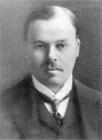1
Harold Sidney HarmsworthThe Money Man
Harold was the financial brains behind the most successful journalistic enterprise in British history. His eldest brother, Alfred, was the visionary behind the Harmsworth publishing empire but it was Harold who ensured that it stayed on firm financial footing. His was a cautious, prudent personality even though the family nickname for him was "Bunny". Where Alfred excelled with words and vision, Harold's forte was numbers, caution and restraint. It was he, more than anyone else, who was responsible for the amazing success story of the Harmsworths.
2
Harold Harmsworth: The Money ManCirca 1890
 Credits:
Credits:Taylor, S.J. The Great Outsiders; Northcliffe, Rothermere and The Daily Mail. Copyright © S.J. Taylor, 1996
3
Early CareerThe same year of Alfred's marriage to Mary Milner, Harold had begun his career as a clerk with the Mercantile Marine Office of the London Board of Trade. His salary was 35 shillings a week but with the boom in Britain's overseas trade, he could look forward to a secure future in this position. He immersed himself in the world of finance and was well versed in many aspects of the business world, a skill-set which was to serve the family endeavours well. His personal motto was very appropriate:
Bene Qui Sedulo (He who acts diligently acts well)
5
Harold Sidney HarmsworthEarly 1900s
Location unknown
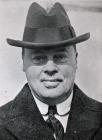 Credits:
Credits:Grand Falls Windsor Heritage Society A.N.D Collection
6
Harold Harmsworth1939
Location unknown
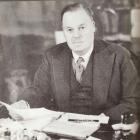 Credits:
Credits:Taylor, S.J. The Great Outsiders; Northcliffe, Rothermere and The Daily Mail. Copyright © S.J. Taylor, 1996
7
Marriage and FamilyOn July 4th, 1893, Harold Married Mary Lilian Share (d. 16 Mar 1937), the daughter of George Wade Share, of Forest Hill, County Surrey. They had three sons|
" Captain Hon. Harold Alfred Vyvyan St. George Harmsworth (born 2 August 1894, died 12 February 1918)
" Lt. Hon. Vere Sidney Tudor Harmsworth (born 25 September 1895, died 13 November 1916)
" Esmond Harmsworth, 2nd Viscount Rothermere (29 May 1898-1978)
The first two were killed in World War I and Harold never quite got over their deaths. He endowed university buildings, scholarships, items and sites in their memory. His entire empire and title were inherited by his sole surviving son, Esmond, upon his death in 1940.
8
Harold Harmsworth: Marriage and FamilyCirca Early 1900s
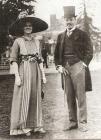 Credits:
Credits:Taylor, S.J. The Great Outsiders; Northcliffe, Rothermere and The Daily Mail. Copyright © S.J. Taylor, 1996
9
Harold and His Three SonsEarly 1900s
Location unknown
 Credits:
Credits:Taylor, S.J. The Great Outsiders; Northcliffe, Rothermere and The Daily Mail. Copyright © S.J. Taylor, 1996
10
Lilian and Her Three SonsEarly 1900s
Location unknown
 Credits:
Credits:Taylor, S.J. The Great Outsiders; Northcliffe, Rothermere and The Daily Mail. Copyright © S.J. Taylor, 1996
11
Harold's wife: Lilian ShareEarly 1900s
Location unknown
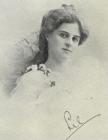 Credits:
Credits:Ferris, Paul. The House of Northcliffe: The Harmsworths of Fleet Street. Weidenfeld and Nicolson, London, 1971.
12
In 1930, Rothermere purchased the freehold of the old site of the Bethlem Hospital (also known as the Old Bedlam) in Southwark for ?155,000. He donated it to the London County Council to be made into a public open space, to be known as the Geraldine Mary Harmsworth Park in memory of his mother, for the benefit of the "splendid struggling mothers of Southwark" and as a children's playground . This site is now behind the Imperial War Museum of which the current Lord Rothermere is Chair.13
Harold Harmsworth: FamilyCirca 1934 and Circa 2009
London, England
 Credits:
Credits:Story by: Laura Collins
http://www.dailymail.co.uk/news/article-1200671/Touching-park-tribute-remarkable-matriarch-Rothermere-family.html
Ferris, Paul. The House of Northcliffe: The Harmsworths of Fleet Street. Weidenfeld and Nicolson, London, 1971.
14
Public LifeIn 1914 Alfred, now Lord Northcliffe, decided to sell his share in the Daily Mirror to Harold, now Lord Rothermere. In the First World War the Daily Mirror became the most popular newspaper on the Western Front. The soldiers particularly liked the fact that the newspaper included so many pictures of life back home. The newspaper also published a large number of pictures of the war. Probably the most dramatic example was the German daylight air raid over London in 1917. Rothermere loyally gave support to the British government in the war and in 1917 David Lloyd George appointed Rothermere as his Air Minister. He was made Viscount Rothermere of Hemsted in the County of Kent in 1919.
Rothermere continued his involvement in political life after the First World War through his papers and his personal connections. He was strongly opposed to communism and promoted this stance vigorously. Four days before the 1924 General Election, Rothermere decided to publish what became known as the Zinoviev Letter which urged British communists to promote revolution through acts of sedition. The letter, later discovered to be a forgery, contributed to the defeat of Ramsay MacDonald and the Labour Government.
Rothermere became increasingly nationalistic in his political views and in 1929 joined with Lord Beaverbrook to form the United Empire Party. Rothermere urged the Conservative Party to remove its leader, Stanley Baldwin, and replace him with Beaverbrook. He also argued for a reform of the House of Lords to make it possible for peers to be elected to the House of Commons. This dispute divided conservative voters and this enabled the Labour Party to win the 1929 General Election.
In the 1930s Rothermere moved further to the right and gave support to Oswald Mosley and the National Union of Fascists. He wrote an article, Hurrah for the Blackshirts, in January, 1934, in which he praised Mosley for his "sound, commonsense, Conservative doctrine".
Rothermere also had several meetings with Adolf Hitler and argued that the Nazi leader desired peace. In one article written in March, 1934, he called for Hitler to be given back land in Africa that had been taken as a result of the Versailles Treaty.
Rothermere and his newspapers supported Neville Chamberlain and his policy of appeasement. He was therefore devastated when war broke out between Britain and Germany in 1939. He leant his efforts to the Allied cause, however, and in 1940, Baron Beaverbrook sent Harmsworth on a special war mission to Canada and the United States. Following this effort, he went to Bermuda for a rest where he took ill and died of dropsy at the age of 72.
